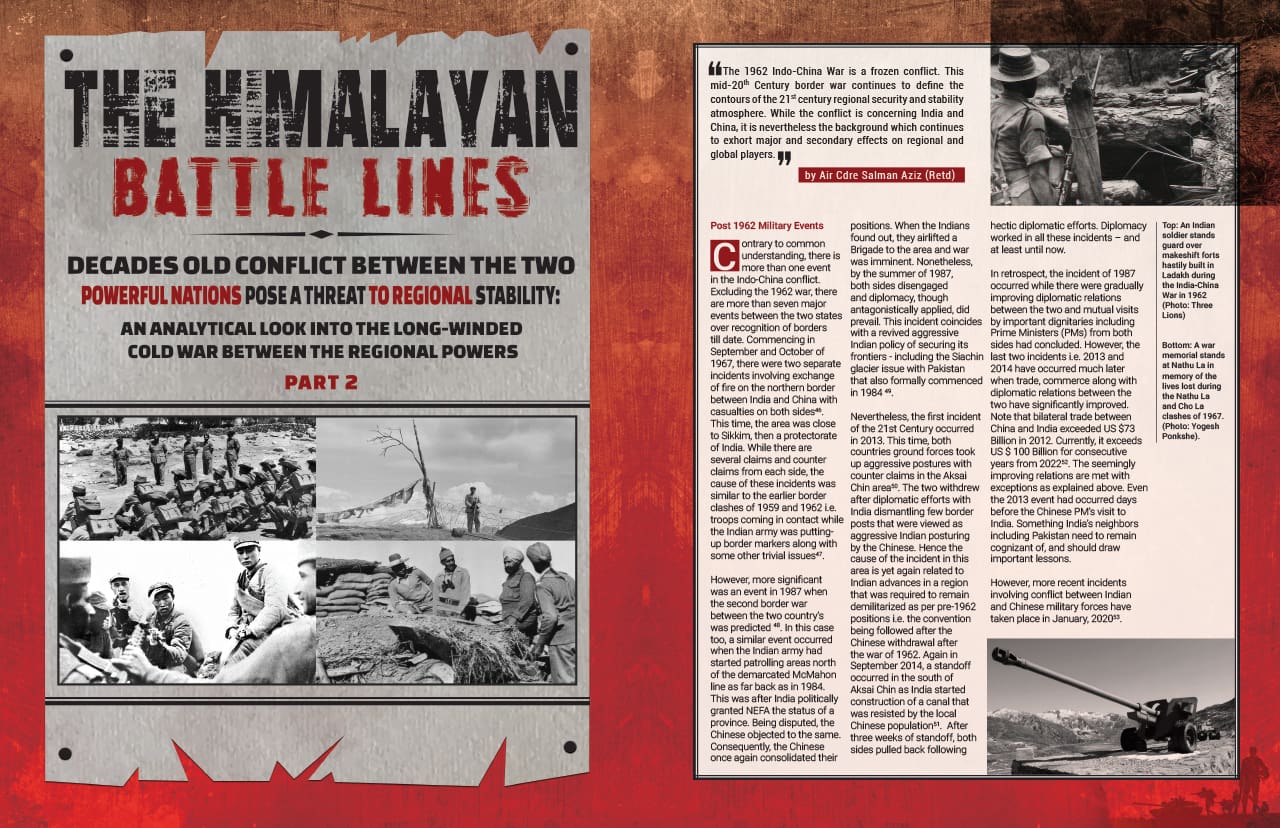Decades old conflict between the two powerful nations pose a threat to regional stability:
An analytical look into the long-winded cold war between the regional powers Part 2
The 1962 Indo-China War is a frozen conflict. This mid-20th Century border war continues to define the contours of the 21st century regional security and stability atmosphere. While the conflict is concerning India and China, it is nevertheless the background which continues to exhort major and secondary effects on regional and global players.
Contrary to common understanding, there is more than one event in the Indo-China conflict. Excluding the 1962 war, there are more than seven major events between the two states over recognition of borders till date. Commencing in September and October of 1967, there were two separate incidents involving exchange of fire on the northern border between India and China with casualties on both sides46.
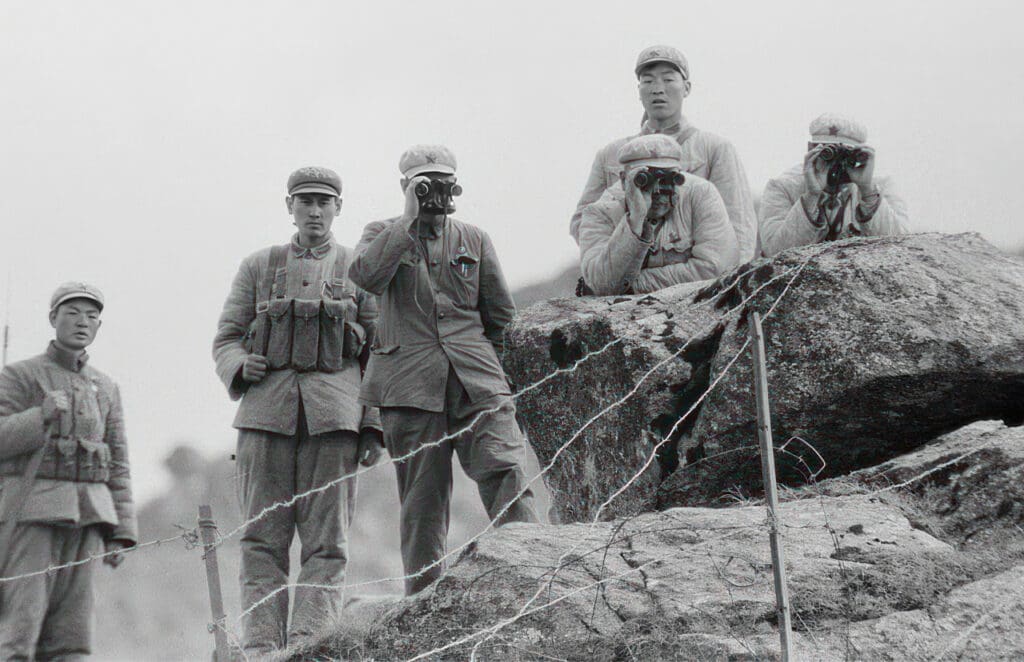
This time, the area was close to Sikkim, then a protectorate of India. While there are several claims and counter claims from each side, the cause of these incidents was similar to the earlier border clashes of 1959 and 1962 i.e. troops coming in contact while the Indian army was putting-up border markers along with some other trivial issues47.
However, more significant was an event in 1987 when the second border war between the two country’s was predicted 48. In this case too, a similar event occurred when the Indian army had started patrolling areas north of the demarcated McMahon line as far back as in 1984. This was after India politically granted NEFA the status of a province. Being disputed, the Chinese objected to the same. Consequently, the Chinese once again consolidated their positions. When the Indians found out, they airlifted a Brigade to the area and war was imminent. Nonetheless, by the summer of 1987, both sides disengaged and diplomacy, though antagonistically applied, did prevail. This incident coincides with a revived aggressive Indian policy of securing its frontiers – including the Siachin glacier issue with Pakistan that also formally commenced in 1984 49.
Nevertheless, the first incident of the 21st Century occurred in 2013. This time, both countries ground forces took up aggressive postures with counter claims in the Aksai Chin area50. The two withdrew after diplomatic efforts with India dismantling few border posts that were viewed as aggressive Indian posturing by the Chinese. Hence the cause of the incident in this area is yet again related to Indian advances in a region that was required to remain demilitarized as per pre-1962 positions i.e. the convention being followed after the Chinese withdrawal after the war of 1962. Again in September 2014, a standoff occurred in the south of Aksai Chin as India started construction of a canal that was resisted by the local Chinese population51. After three weeks of standoff, both sides pulled back following hectic diplomatic efforts. Diplomacy worked in all these incidents – and at least until now.
In retrospect, the incident of 1987 occurred while there were gradually improving diplomatic relations between the two and mutual visits by important dignitaries including Prime Ministers (PMs) from both sides had concluded. However, the last two incidents i.e. 2013 and 2014 have occurred much later when trade, commerce along with diplomatic relations between the two have significantly improved. Note that bilateral trade between China and India exceeded US $73 Billion in 2012. Currently, it exceeds US $ 100 Billion for consecutive years from 202252. The seemingly improving relations are met with exceptions as explained above. Even the 2013 event had occurred days before the Chinese PM’s visit to India. Something India’s neighbors including Pakistan need to remain cognizant of, and should draw important lessons.
However, more recent incidents involving conflict between Indian and Chinese military forces have taken place in January, 202053.
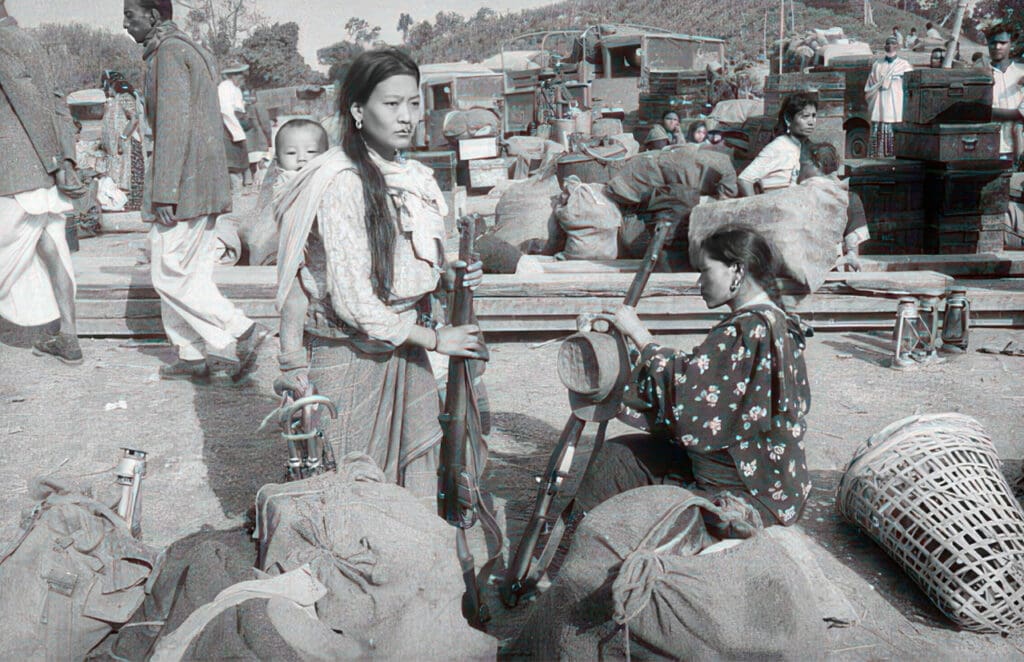
In the incident, it is once again agreed that India’s construction of a new road to a high-altitude Indian air force base is seen as one of the main triggers. What followed was a clash of Indian troops in May, 2020 in which the Chineese responded with sticks and fists in the ‘Galwan’ area on the Line of Actual Contact i.e. LAC. The incident left at least 20 Indian soldiers dead with several casualties while some causalties were also reported on the Chinese side. In September, 2020, shots were reportedly fired in frustration from the Indian side54– an event recurring after more than 45 years. The situation finally calmed down through diplomacy at state level and with the involvement of local military commanders up to Corps level. Until January, 2022, there have been approximately 14-15 such engagements of various types. The latest clash has been as late as December, 202255. Nevertheless, for the time being, a doctored calm prevails56 by both sides not trying to aggravate the situation57. Although India is attempting to enhance its support for the US in the Indian Ocean and play with its long held desires of adopting the position of a regional hegemon58. albeit the long history of such struggles in the region59!
Consequently, both have undertaken purposed infrastructure development at key points along the disputed border areas along with increased deployment of troops and repositioning of populace at key locations60. The emphasis of the belligerents is clearly on building abilities61 to undertake Military Operations in the high-altitude, ultra cold and dry region of the world and to sustain these operations as per strategic assessments and feasibility. Therefore, infrastructure includes evelopment of roads, tracks, airfields, helicopter landing zones and staging areas or living quarters with feeding of logistics through extended railway tracks, specifically in Indian held Kashmir side.
However, going by Maxwell’s analyses supported by other facts mentioned above, the Indian army’s overall line of action in this conflict does appear to occasionally and periodically adopt the pre-1962 war tactics. This is the shade of gray that is perhaps or could be transforming into the dark side of the story and would require a completely separate research. Without over simplifying, it can be explained that the Indian army, by nature of Indian political system, cannot act independently. Therefore, it is reasonable to consider that when shades of aggressive politics are accompanied by domestic political compulsions – these combine to set a belligerent mood in India. This was the setting and method applied by Nehru, the military hierarchy and his political opponents before the aggressive forward policy was formulated and applied in 1962. As elsewhere, often this mood is generated by a congregation of individuals with hawkish political mindset62 like unifying the nation through war– a repeat of 1962 , 1987 and perhaps recently in 201964. A factor important for India’s neighbors and that Pakistan too must keep in view when the bravado of the Shiv Sena of today comes through the Indian parliament. Unfortunately, after arrival of the new Indian political leadership of Mr Modi with controversial Shiv Sena (read also as extention of Gujarat riots of 2002) related background, further possibilities of enhancement in tensions cannot be ruled out65.
In essence, this dark side may potentially also impede progress made between the India and China. However, there is yet another side of this conflict that needs elaboration to further complete the picture i.e. this was a military conflict between two of the worlds very large sized and rising states. Each brought with itself its friends and allies – a factor that shaped the dynamics of strategic alliances and continues to do so till date!
Analysis of the World of Strategic Interests and Alliances: Past, Present and Future
From the military forces application point of view, all incidents including the 1962 war were tactical manoeuvres conducted by tactical sized forces i.e. only three divisions or equivalent strength from each side were involved in 1962 war66. However, the ensuing political and military contest between India and China resulted in certain strategic effects. An overview of these relationships using the 3G (Geopolitical, Geo-economic and Geophysical) analytical 67 tool would therefore be beneficial to comprehend the wider effects of this conflict. Moreover, the ensuing strategic partnerships can be seen in light of the background of Indian political stance at regional and international level. When it comes to strategic alignments and blocs, it is motivated by state interests and events.
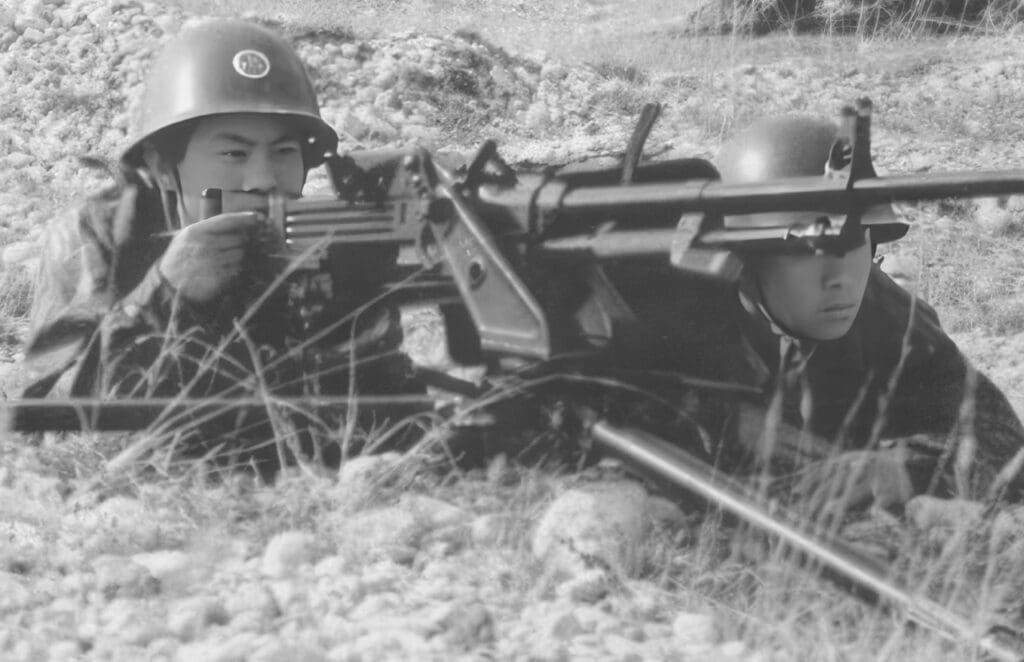
Firstly, regarding regional players’ alignments and then the great powers. Interestingly, since independence, India had strongly adopted and steadily solidified its stance as a non-aligned state i.e. it was not a member of the US (western) or Soviet Bloc. In fact, India was the de facto leader of the Non Aligned Movement (NAM) of Afro-Asian states – only to be rejected by most after the 1962 war68 for reasons explained subsequently. In fact, India had continued to receive economic assistance from USA since 1947 that increased as tensions enhanced with China after 195969.
Subsequently, as initial Chinese reactions became evident after their forward patrols were engaged, the Indian leadership pleaded to the US in secrecy for assistance. Thus, emergency US and later British military aid was made available before the intense fighting in 1962. The reason was simple – like today – India was a symbol of democracy while China was a communist power. Actually, short of the main military engagements, Indian army’s assessment was the necessity to involve US tactical airpower to hold back the Chinese. Upon request, a US aircraft carrier was also dispatched to the Bay of Bengal but was too late to intervene and turned back before deploying70. All this was in addition to the ongoing assistance by USSR. Note that India-USSR relations had been initiated earlier by mutual visits between Nehru and Khrushchev in 1955 as a part of Soviet attempts to influence Third World Countries. Therefore, economic, trade and military relations between the two had commenced much to the disliking of Mao. But during this conflict, USSR was recovering from the Cuban Missile crisis of mid-196271. Thus, USSR was neither in a position to antagonize the West nor did it want to close its options with India. Simultaneously, it also consented to the Chinese requirements in 1962 for defending their own territory, should the Indians cross the traditionally accepted geophysical boundaries between them.
Whereas, Indo-US relations date back since post independence era, they were strengthened by Eisenhower’s visit to India in 195972. Unknown to many and never accepted openly, US economic aid had flowed to India since the post-independence era. In 1962, India clearly depended on the West and in particular USA when the conflict was unfolding. Hence, on one hand, despite its NAM posture to the world and domestic audience, the Indian government followed a policy of western alignment by playing the anti-communist role of containing the Chinese only – not the USSR. On the other, it also successfully followed a policy of dual front at that time by keeping the Soviet’s engaged and supportive – a repeat of these would be visible decades later– something that is perhaps still being played today i.e. as of 2022.
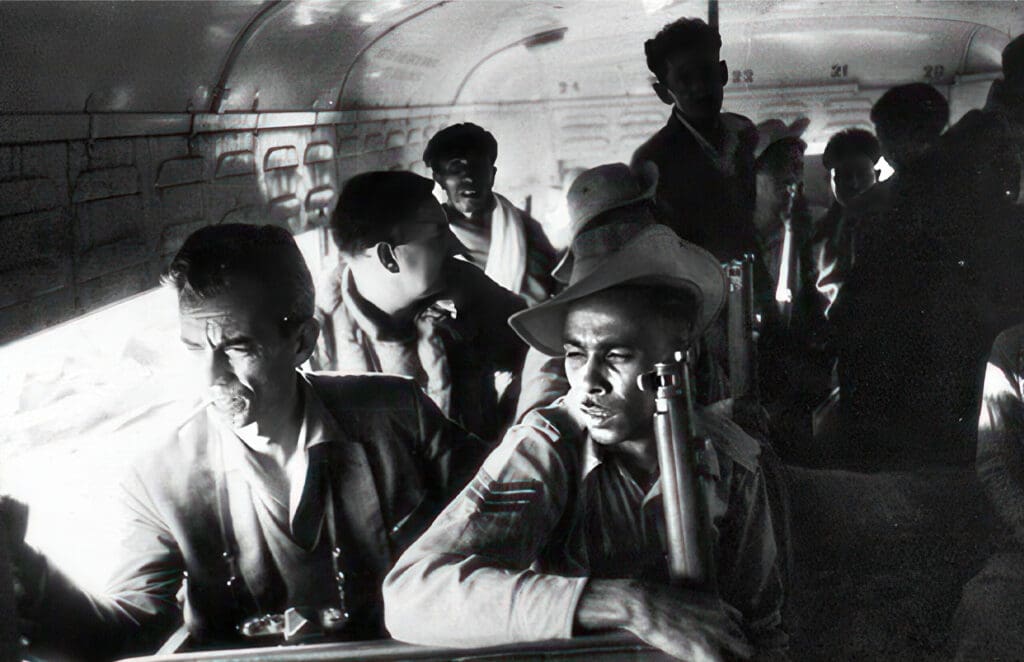
That the pre-partition Indian border demarcations had several issues is widely known. It is also equally understandable that due to the dynamics of the partition process and historical perspective of cultural factors, India has always maintained certain amount of hostility towards Pakistan. Nonetheless, during the mid-1950s to early 1960s, China had peacefully settled border disputes with Myanmar, Nepal and Pakistan73. In fact, initial Chinese assessment had expected the Indian issue would be relatively simpler. It is interesting to note that in the years before settlement of the border demarcation issue, Pakistan was apprehensive about China regarding her possible expansionist policy – as normally perceived at that time. Thus Pakistan had initially proposed a joint defence pact with India, only to be rejected by Nehru74. Under a separate set of circumstances i.e. apprehensions of Soviet communist expansion, Pakistan was also a member of the now defunct SEATO and CENTO since 195475. Nevertheless, after western military assistance to India in 1962, Pakistan feared that the same could be used against it. Later, in the backdrop of USSR’s continued assistance to India and subsequent US embargo76. on Pakistan after the 1965 war with India, relations with China progressively improved77.
The global bloc alignments hence witnessed changes in the 1950s – 60s. In that, during the late 1950s, China had started to drift away from the USSR due to its own border quarrels78 but most importantly due to détente79. Therefore, while today’s reasons may differ up to a certain degree, it is clear that the bloc and allied-state realignment was evident through the mid 1950s – 60s. This was prominent in 1962-65 i.e. in the transition years, as the US would continue to leverage India against China. This is evidently existing till date albeit greatly improving economic, trade, technological and military ties between India and USA. Thus, in the 1960s, India was never really ‘NAM’ – as openly stated. India always maintained dual bloc relations with Russia and USA in Diplomatic, Informational, Military and Economic (DIME80) spheres to improve its instruments of power – something clearly visible today as well. The exception is that until relatively recent years, it is accompanied with positive attempts to diplomatically and economically improve relations with China while aggressively following a policy that is benign on the face. The motivation has improved stability in relations, trade and of course, the overall business. However, in the background, a subtle change has apparently taken place in the thinking of the Indian leadership and will be discussed subsequently.
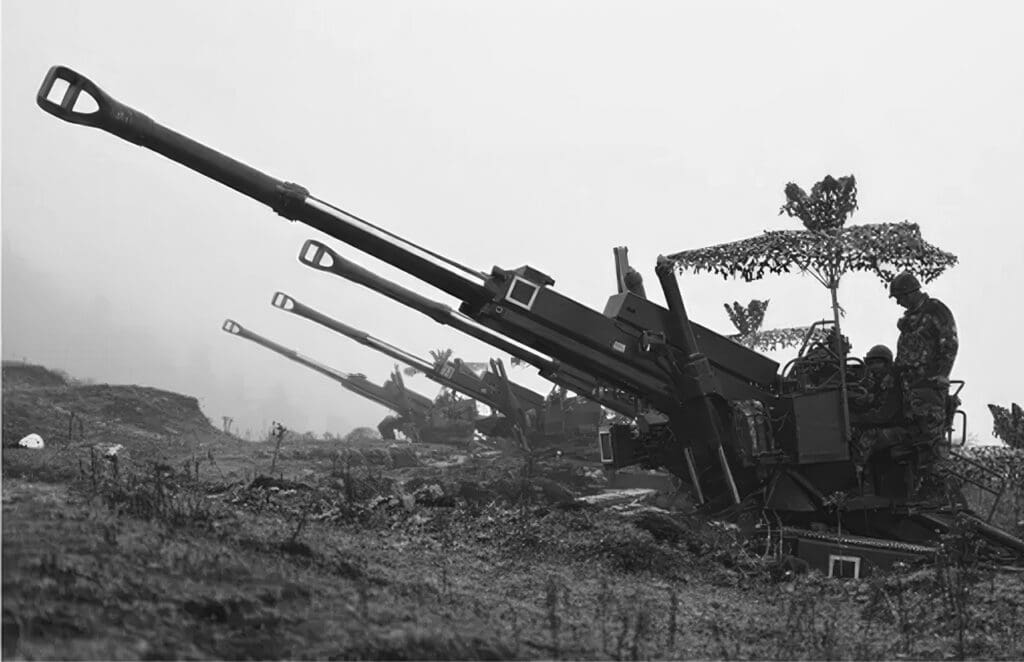
Viewed from the lens of Indo-China conflict, the differences from 1962-65 are also important. While Pakistan still maintains friendly relations with China, it definitely enjoys a love-hate relationship with the US since the 1965 war. It has been dependent upon USA in several ways including the stability of the region in the context of the Afghan issue. Overall, Pakistan is no longer as strong a US ally since Russian expansion is no longer valid in South Asia. It is only a partial US partner in regional Counter Terrorism efforts with several concerns from both sides. While Pakistan has only recently started to improve relations with Russia, the context is totally different i.e. like Europe, it is mainly to accrue benefits of cheaper oil, gas and grain. This is however to the disliking of the west – especially USA. Nonetheless, the Sino-Russian relationship81is steady with improvements since post Mao era of 1980s and after the disintegration of USSR. Another major contextual difference is that US-China relationship82 is totally transformed. In brief, besides issues East of China with Taiwan and the ownership of islands in South China Sea, it is transitioning beyond economic competition and economic interdependence to strategic competition between USA and China.
To the Pacific states and USA, the rising strategic competition it is less about the fear of the spread of communism. Now, it is more about two factors i.e. ‘which system of governance is better’ and that ‘who would dominate the world in the future’. Similarly, despite its requirements to economically flourish that may exist up to a certain level on the west including USA and EU, Russia has politically drifted away and is following its own path. Perhaps it is an attempt or drive to revive its USSR-like political might and military status at global level. For these and other strategic reasons, it is more cooperative with China. This is further evident since the breakout of the war in Ukraine since February, 2022. An event that has exasperated the polarization between the western bloc including NATO and EU against Russia. As a consequence, Russia supports China in its stance regarding the Pacific as does China diplomatically support Russia. Apparently, the world is witnessing itself drifting towards a multipolar geo-political environment.
Finally, compared to 1962, there is one more aspect regarding India i.e. stronger US – India relationship that is in synchronization regarding each other’s counter strategy against China, at least in the Indian Ocean. This is once again the main ingredient of developing strategic interests of USA and India. The recent Indian attempts to stretch itself towards Vietnam and Japan, possibly as a counter to the erstwhile Chinese string of pearls; and in support of the US Pacific pivot can be interpreted in the same context83. Hence, Indian diplomatic and military ventures in the strategic domain including her aspirations for development of an air force as an aerospace force, a blue water navy, an expeditionary role for the army (called Out of Area Operations capability), massing forces for a two front scenario i.e. against China and Pakistan, improved range Ballistic and Undersea Missiles with nuclear arsenal enhancements and desires to induct Tu-160 M ‘white swan’ strategic bomber aircraft84 from Russia are in the context of her political and mythical psyche of Bharat!
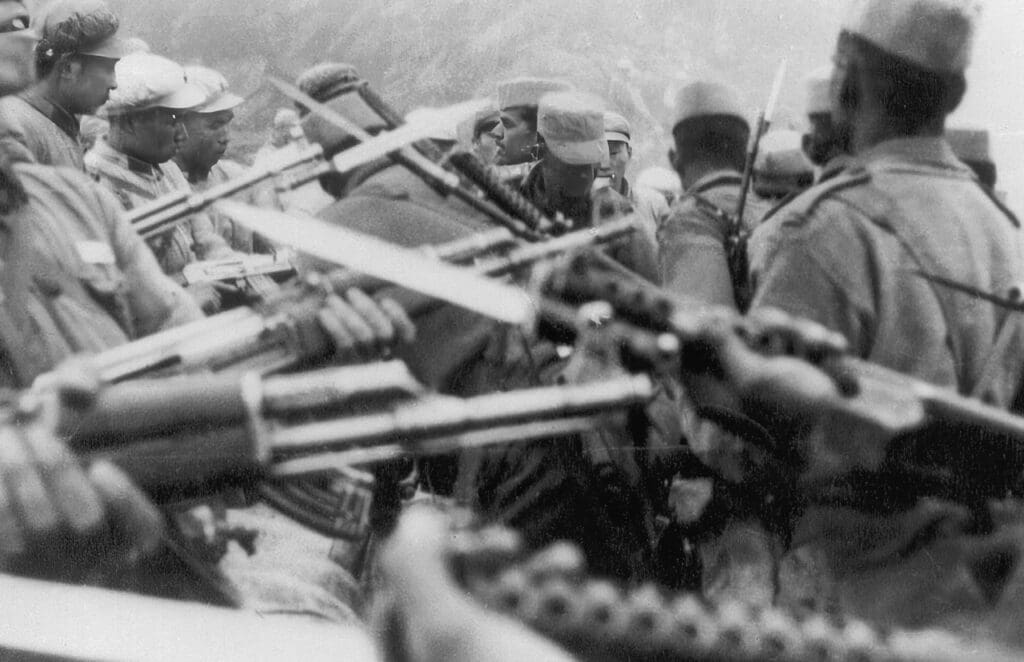
From an analytical point of view, Indian leadership has an in-principle understanding and several agreements85 with the US progressively over the years. Today, after atleast a decade of negotiations, they are like the Basic Exchange and Cooperation Agreement (BECA) involving amongst other services is availability of US geospatial information, the Logistics Exchange Memorandum of Agreement (LEMOA) that mainly involves access to designated military facilities on both sides, the Communications Compatability and Security Agreement (COMCASA) that opens the way to sensitive US military equipment exports to India with certain US conditions and the Industrial Security Agreement (ISA) that mainly opens the way for India to receive classified industrial information from USA. These are a part of the new US South East Asian Bloc against China. From almost a nil amount in 2008, today these pacts and agreements span over US $ 20 Billion. Indian membership to the QUAD involving USA, Japan and Australia and eventually active participation in multinational Exercises like the Malabar series in Guam and Pitch Black in Australia are in the context of the same.
In this complex web of geostrategic, geopolitical and geo-economic factors between regional and global players, these are the intertwined, sometimes drifting and conflicting connections between nation-states based on national interests. Another aspect that is clear from this entire expose is that we are witnessing a repeat of the geopolitical tensions of the 1950s-60s due to the rising geostrategic competition between the dominant powers of across the globe. In that, India has once again been courted by the US to support it against China and perhaps act as its agent in the Indian Ocean Region. The west is likely to continue backing India – just like the 1960s – where India; notwithstanding the horrific events in Kashmir – represents democracy with no real role or even condemnation by Global powers and International Govermental Organizations of global repute like UNO, HRW and AI, etc. Meanwhile, India continues to play on both sides of the field – just like in the 1960s – it continues to support USA and West against China while accruing benefits of the low cost Russian oil and Rouble standard and trading standard being floated.
Where does this leave us as per the subtitle of our topic i.e. ‘Background and future of one of the least studied war of the region?’ With the recent events and temperaments flaring up due to the war in Ukraine since February, 2022 and later in the Taiwan Straits in August, 2022; it is clear that this frozen conflict in the northern region of India has a potential to flareup. Most likely, as historically witnessed – it would continue to depend upon the posture of the Indian Military machine and the Indian political leadership – how it presents itself or reacts to the next incident in one of the highest battlegrounds of the world! These events and developments cannot be disassociated with the jingoistic rule in India today86!
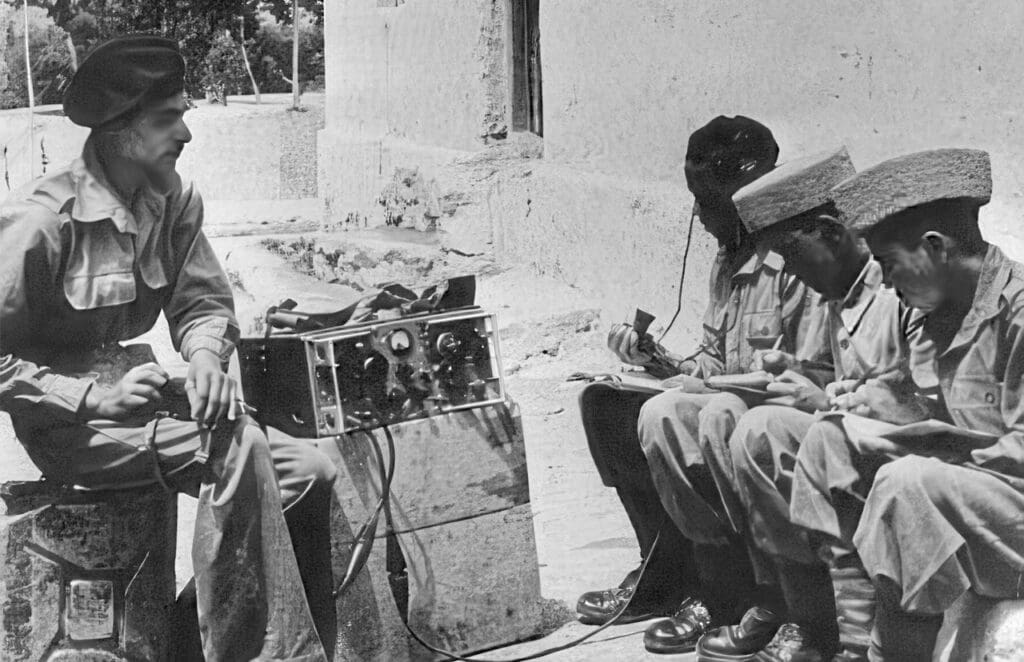
Some assess relations between China and India as strategically stable but with tactical anxiety – a rather mild view of the situation. Viewed in the context of 1962 war, the developments discussed so far can, depending on the circumstances, theoretically play a positive in Indo-China relations i.e. through constructive dialogues. Conversely, relations can also further deteriorate if played negatively. The matter can be considered to possess the potential to destabilize not only South Asia but other regions as well. For the present, review of the series of varying intensity military stand-off’s between India and China actually mirror the underlying and possibly impending political tension between the two. What can be drawn from the 1962 Indo-Chinese war in terms of regional stability is that it has had and continues to be assessed as a threat to regional stability. Viewed realistically in the backdrop of its history along with developments since 1959, and further correlated with the events from 2022-23 onwards in the region north of the Black Sea and recent events in the Straits of Taiwan – any future mishandling certainly possesses the ability of events to spin out of control on a much wider scale – possibly regional to global cascading effects. The following is summarized regarding the conflict till date: –
(a) The region continues to represent a tense region over a large geographical swathe with political ramifications for both87 .
(b) Both sides are militarily building infrastructure and continue to enhance deployments.
(c) Both sides undertake exercises, including special forces and airpower employment. Military literature does not preclude ballistic missile employment.
(d) This potential conflict now clearly draws linkages to other geo-politico-economic events and military conflicts or tensions in the World – in specific – in the Straights of Taiwan, tensions in the Korean peninsula, conflicts in the Middle East Region and rising tensions in the Red Sea, and the Persian / Arabian Gulf region
Conclusion
While there are many lessons and conclusions that can be drawn from this expose, in essence, we have considered six main factors while analyzing the 1962 Indo-China war. Chronologically,
(a) First is the history of the problem. Though complex but neither difficult to comprehend nor resolve, at least technically. Since it has a cultural context with customary understanding and perhaps folklore on the Indian side, it remains presently unresolved. For resolution, the traditional Indian biases would need to be overcome by Indians themselves specifically the BJP / RSS type hawks.
(b) Second is that diplomatic, informational and specifically economic relations between India and China have been steadily improving based on a generation of efforts from both. These are the reasons that we should remain optimistic regarding their future relations. It must be however noted that economic cooperation was initiated to improve diplomatic relations and is not ‘critical’ in the sphere of either’s interdependence.
(c) The third point we considered was the scars of 1962 war, specifically for India and the ensuing tensions with the three relatively recent border incidents of 2013, 2014, 2020 and surely of 2022. These counteract the second factor (above), and that recurrence of such skirmishes or recent tactical standoffs, though never desirable, cannot be totally ruled out. This is also a lesson, that business is business and that a diplomatic exchange involving sipping a cup of tea is just that. Hence, economic and trade relations can alone seldom deactivate tensions specifically in issues of national sovereignty and interests. Something few in Pakistan yet need to fully comprehend regarding Kashmir and other simmering issues.
(d) Fourth is about global relationships; bloc alignments and the drive towards multipolarity in the 21st Century. Although the Indo-Russian relationship continues to be time tested, India has diversified its military import sources and has a clear tilt towards the west – especially the US. Nevertheless, there are still many mutual military and economic cooperation projects with Russia – especially after the Ukraine crisis and the Indian spree of purchasing cheap Russian oil and the prospects of all future trade in Rouble. Conversely, Russia and China are now much more strategically closer compared to 1962 – especially after the war of 2022 in Ukraine and to some extent the developments in the ME. Although each would take care of their own interests, Russia would need to walk a much more careful path should there be any future Indo-Chinese conflict. Similarly, in the aftermath of the Ukraine war of 2022, Russian politico-military support to India may not continue as it did in 1962. Therefore, the altered 3G (Geopolitical, Geostrategic and Geo-physical) priorities now affect previous regional strategic alignments and would place restrictions on India while allowing more strategic leverage to China.
(e) The fifth and dominant factor is that Indo-US relations are stronger and steadier than 1962 and span across the diplomatic, informational, economic and especially increasing realm of military cooperations and agreements. Each has mutual 3G benefits in this relationship along with achieving counterbalance against China – specifically in the Indian Ocean Region (IOR). In the wake of increasing and open US support to India against China, India would need continued support from its other newly found Pacific theatre allies. Examples include but are not rrstricted to agreement on the signatures to various agreements including the LEMOA allowing USN and IN warships to replenish at each other’s ports. Another factor that Pakistan would need to take into cognizance in the 21st Century environment of multipolar and interchanging to floating coexistent Bloc alignments.
(f) Beyond these five factors is the last, the most important and intrinsic factor that dominates the remaining i.e. India itself is the most important player regarding the future of this frozen conflict. After all, the conflict did start as a result of miscommunications, non-negotiating aggressive attitude, incorrect military advice and miscommunication between political and military leadership within India. Then, the fuel to the fire was from internal Indian politics, specifically from the BJP / VHP / RSS aggressive stance, combined with hawkish political inputs along with media outburst and public pressure – something that has reemerged in India from the past 8-10 years and that Pakistan must be able to read this, should the events start to snowball. Today, the Indian internal political structure is progressively getting more aggressive under the BJP and Mr Modi along with a military that wants to become more vocal as it gains more muscle. In today’s media intense world, another minor incident like the 2020 Galwan episode can easily spin out of control. Then, external factors related to geostrategic alignments can quickly emerge to play their role – positive or negative – as per the national interests of the regional and international players. Indeed, while there are reasons to remain optimistic about the improving political and economic relations between India and China, there are at least an equal number of reasons that foretell that care must be exercised as any minor event could be a threat to trigger another major military confrontation. The extention of the Galwan incident could also transcend elsewhere for example, any minor incident between patrolling Indian and Chinese Navy warships in the Indian Ocean Region or elsewhere.
In quintessence, for a combination of the aforementioned six reasons including external and internal factors, it could be argued that excluding economic dividends, the overall balance of assessment is that the 1962 Indo-Chinese war had and could continue to negatively affect regional stability even in the 21st Century. If aggravated, it can very easily affect the regional stability, possibily extending to a global level. While the responsibility to maintain stability in relations with monitoring of several internal politico-military aspects is in-principle on both sides, it certainly appears to be higher on the Indian political while its military leadership should not unnecessarily beat the war drums every few months!
References
46 Wikipedia. “The Chola Incident”. http://en.wikipedia.org/wiki/Chola_incident .
47 Wikipedia. “Sino-Indian border dispute”. http://en.wikipedia.org/wiki/Sino-Indian_border_dispute
48 Wikipedia. “Sino-Indian skirmish” http://en.wikipedia.org/wiki/1987_Sino-Indian_skirmish.
49 Wikipedia. “Siachin Conflict”. http://en.wikipedia.org/wiki/Siachen_conflict.
50 “The Daulat Beg Oldi Incident”, Wikipedia, http://en.wikipedia.org/wiki/2013_Daulat_ Beg_ Oldi_ Incident.
51 “India-China Border Dispute”, Global Security. Org, http://www.globalsecurity.org/military/world/war /india-china_conflicts.htm.
52 India-China trade goes up to over $67 bn in first half of 2022, PTI, https://www.business-standard.com/article/ international/india-china-trade-goes-up-to-over-67-bn-in-first-half-of-2022-122071301577_1.html
53 Rajagopalan, Rajeswari Pillai; he Galwan Valley India-China Skirmish Is a Gamechanger for New Delhi https://thediplomat.com/2020/06/the-galwan-valley-india-china-skirmish-is-a-gamechanger-for-new-delhi/
54 India-China dispute, BBC, https://www.bbc.com/news/world-asia-53062484
55 Stephenson Alex and Rajeev Nishant, Why We Should All Worry About the China-India Border Dispute, USIP, https://www.usip.org/publications/2023/05/why-we-should-all-worry-about-china-india-border-dispute.
56 Markey, Daniel and Scobell Andrew , Three Things to Know About China-India Tensions, USIP, https://www.usip.org/publications/2023/10/three-things-know-about-china-india-tensions.
57 Al Jazeera, India and China pledge to maintain ‘peace and tranquility’ along border, https://www.aljazeera. com/news/2023/8/16/india-and-china-pledge-to-maintain-peace-and-tranquility-along-border.
58 Nisar, Muhamad Adan, Indian strategic desires in region and role of Pakistan, Pakistan Today, Jan 28, 2023.
59 Aslam Samrah, The Indian Hegemony in South Asia, Paradigm Shift, January, 2021, https://www.paradigmshift.com.pk/indian-hegemony-in-south-asia/
60 Nagao, Satoru,Infrastructure Development in the India-China Border: Factoring the Western Support, Institute for Defence and Security Policy, https://isdp.eu/infrastructure-development-in-the-india-china-border-factoring-the-western-support/; 27 Oct, 2022.
61 Swartz John, Tracking India’s Infrastructure Development Near the Line of Actual Control, ORF, https://www.orfonline.org/research/tracking-indias-infrastructure-development-near-the-lac, 17 Oct, 2023.
62 Neville Maxwell, India’s China War, (Worcester and London: Ebenezer Baylis and son Limited, 1970),176-177.
63 Ibid,362-364, 438-443.
64 Implies to the post-Pulwama Indian attempts to strike fictitious targets and Pakistan’s response – Feb, 2019.
65 “Narendra Modi”, Wikipedia, http://en.wikipedia.org/wiki/Narendra_Modi.
66 Neville Maxwell, India’s China War, (Worcester and London: Ebenezer Baylis and son Limited, 1970), 425.
67 The 3G Methodology: A Practical Approach to Strategic Foresight, RCDS Synopsis, 16 December, 2014.
68 Ibid, 251-252, 262-264.
69 Maxwell, India’s China War, (Worcester and London: Ebenezer Baylis and son Limited, 1970), 378.
70 Ibid, 411.
71 Ibid, 423.
72 “India-US Relations”, Wikipedia, http://en.wikipedia.org/wiki/India%E2%80%93United_States_relations.
73 Neville Maxwell, India’s China War, (Worcester and London: Ebenezer Baylis and son Limited, 1970), 425.
74 Ibid, 206.
75 Ibid, 207.
76 “Pakistan-US Relations”, Wikipedia, http://en.wikipedia.org/wiki/Pakistan%E2%80%93United_States_relations.
77 Neville Maxwell, India’s China War, (Worcester and London: Ebenezer Baylis and son Limited, 1970), 275.
78 Ibid, 285 .
79 “Détente”, Wikipedia, http://en.wikipedia.org/wiki/D%C3%A9tente (accessed 10 January, 2015).
80 R Hilson, “DIME/PMESII Model Suite Requirements Project”, DTIC, Information Technology Division, www.dtic.mil/cgi-bin/GetTRDoc?AD=ADA525056.
81 “Sino-Russian Relations”, Wikipedia, http://en.wikipedia.org/wiki/History_of_Sino-Russian_relations.
82 “China-US Relations”, Wikipedia, http://en.wikipedia.org/wiki/China%E2%80%93United_States_relations.
83 F. William Engdahl, “Obama’s Geopolitical China ‘Pivot’: The Pentagon Targets China”, Global Research, February 02, 2013, http://www.globalresearch.ca/obama-s-geopolitical-china-pivot-the-pentagon-targets-china/32474.
84 White Swan For India? Air Force Ex-Chief Hints At Possible Acquisition Of Russian Tu-160 Bombers To Counter China’s Bulging Might, Eurasian Times, https://eurasiantimes.com/white-swan-for-india-air-force-russian-tu-160-bombers-chinas/.
85 U.S. Security Cooperation With India, fact sheet, Bureau of Political-Military Affairs, 20 Jan 2021, https:// www.state.gov/u-s-security-cooperation-with-india/#:~:text=U.S.%2D India%20defense%20 trade%20 cooperation,(ISA)%20now%20in%20place.
86 Purohit Kunal, Modi’s Hindu Nationalist Diplomacy Is Hurting India’s Image, Foreign Policy, https:// foreignpolicy.com/2023/08/28/india-modi-diplomacy-bjp-hindu-nationalism-religion-manipur/, 28-Aug-2023
87 Tirzu, Aleksandra Gadzala, Rising tensions along the Indian-Chinese border, https://www.gisreportsonline.com/r/china-india-border-2/ 08 August, 2023.
